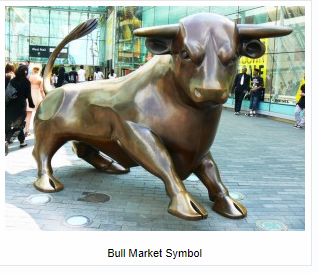.thumb.jpg.58b69ac3a90da8699afcd22cae4acb2d.jpg)
For instance, do you tend to liquidate your positions in the event of a general market correction that sends a particular stock lower than the general indexes, in the event of your position losing a given amount of value (say, 50% or 33%), in the event of a clear-cut technical trend being broken, in the event of a combination of these and/or other elements, or with the use of some other methods altogether?
Answer:
1) The problem is that your questions are those of a trader who plays the market and they are not specific to options. That may seem to be a trivial point, but it far from trivial. It is also one reason that so many newer option traders get into trouble.
When using options, you must (my opinion) trade as if you own options and not stock. That requires a different mindset. Bullish stock owners can ignore timing, they do not have to be concerned with volatility, and there is no concern over whether the options are priced fairly (or are too expensive to purchase). None of that matters — unless you own an option position.

When trading options, you want to think as an option trader thinks to gain the benefits that come with option ownership.
2) Yes, I have such rules. They are not written in stone, but are general guidelines.
If If you have a “long” position, it must be based on your expectation that the stock price will move higher – even if you do not know what the catalyst will be. I would liquidate that position at ANY TIME that you no longer expect the stock to move higher. Sure it can be when the stock price declines by a certain percentage (perhaps 6 – 10%). Yes, it can be when a technical indicator tells you that the buy signal for the stock market or the individual stock is no longer valid.
However, if you own an option, then there is an additional consideration: Can the stock price change occur quickly enough to generate a gain when you own an option position? You would not look at the percentage decline in the price of your call option because that is not the crucial factor. If you still believe that owning that specific option (and that means you must evaluate the time to expiration and whether the option is ITM or OTM), then you can hold. The only important factor is your outlook for the stock in the time period from now to expiration — and whether that expectation makes it a good idea (or not) to own the option that you own. If it is a bad idea, then get rid of the option. Do not believe that owning “any call option” will generate a profit when the stock price rises. When IV gets crushed, you option may lose value, even in the face of a rally. When time passes, the ATM or OTM option can lose all of its value if the rally comes too late.
Any time you are playing the market, you should have a stop loss. And it can be based on anything that you want. However, in my opinion, it is foolish to buy a wasting asset (call option) when you do not know when the stock price will move higher. It would be better to sell an OTM put spread or by an ITM call spread so that if the stock does not move higher right away, you still earn a profit from your position (the put spread goes to zero when both options remain OTM, or the call spread goes to its maximum value when both option stay ITM).






There are no comments to display.
Create an account or sign in to comment
You need to be a member in order to leave a comment
Create an account
Sign up for a new account. It's easy and free!
Register a new account
Sign in
Already have an account? Sign in here.
Sign In Now